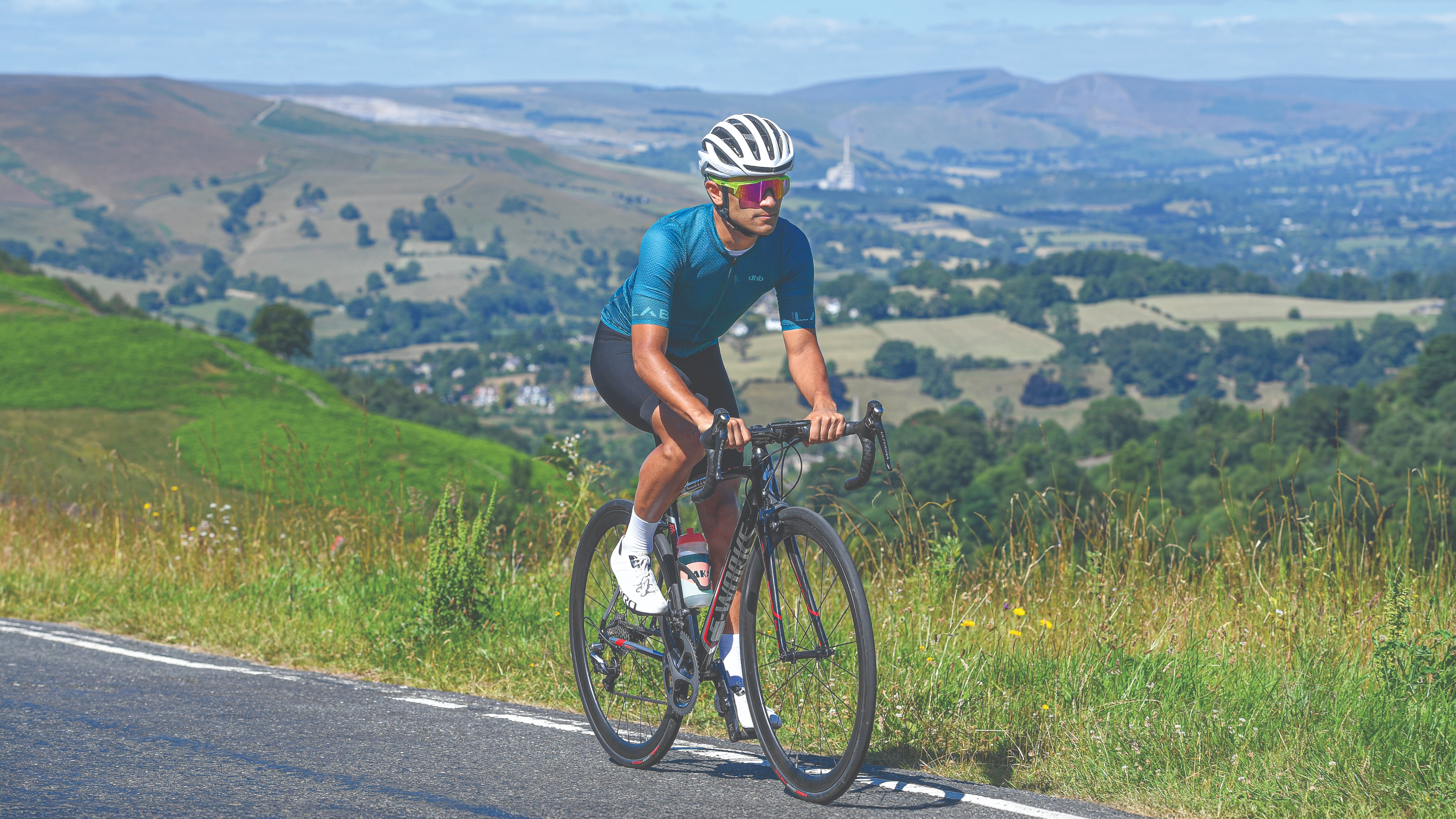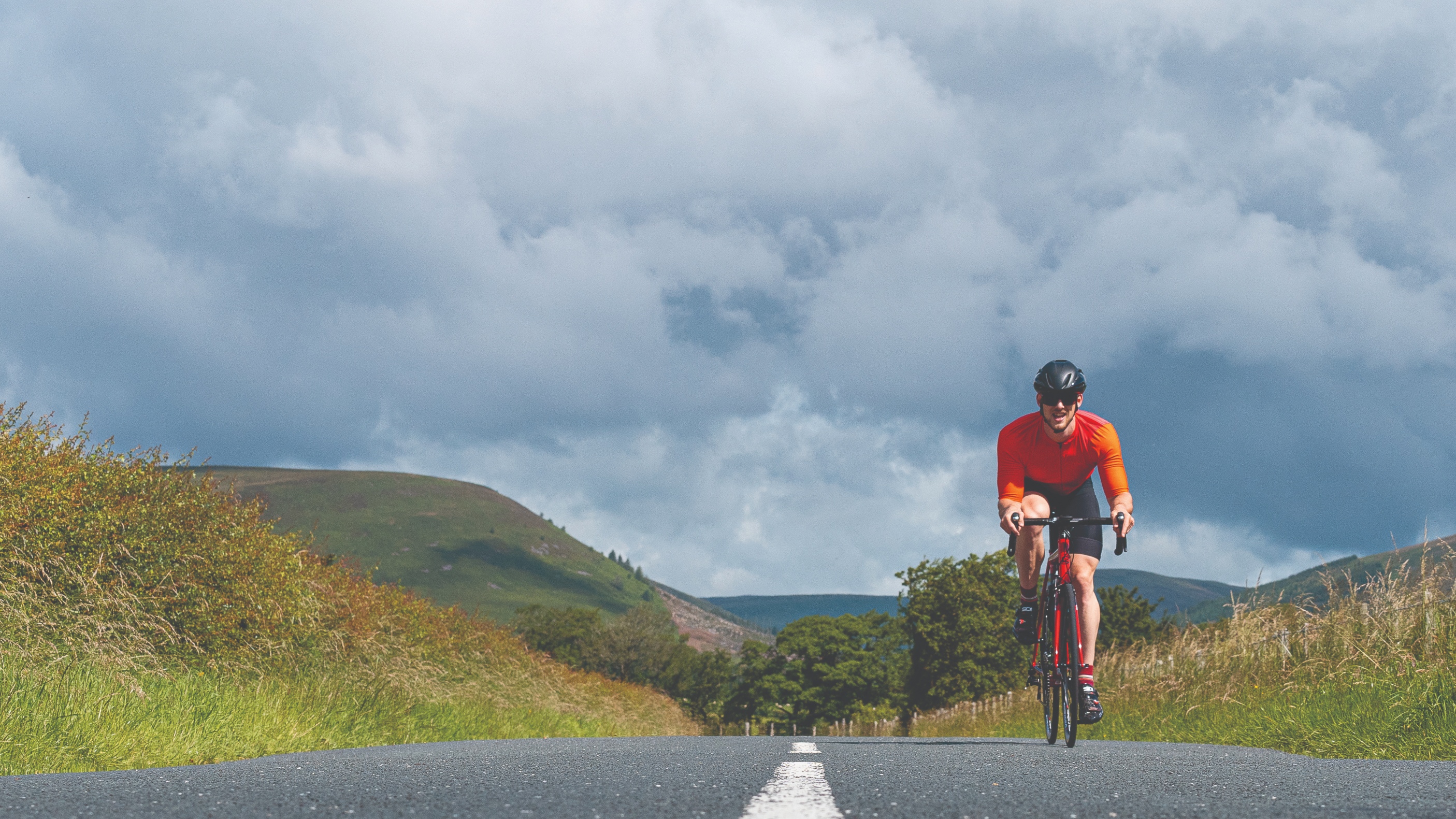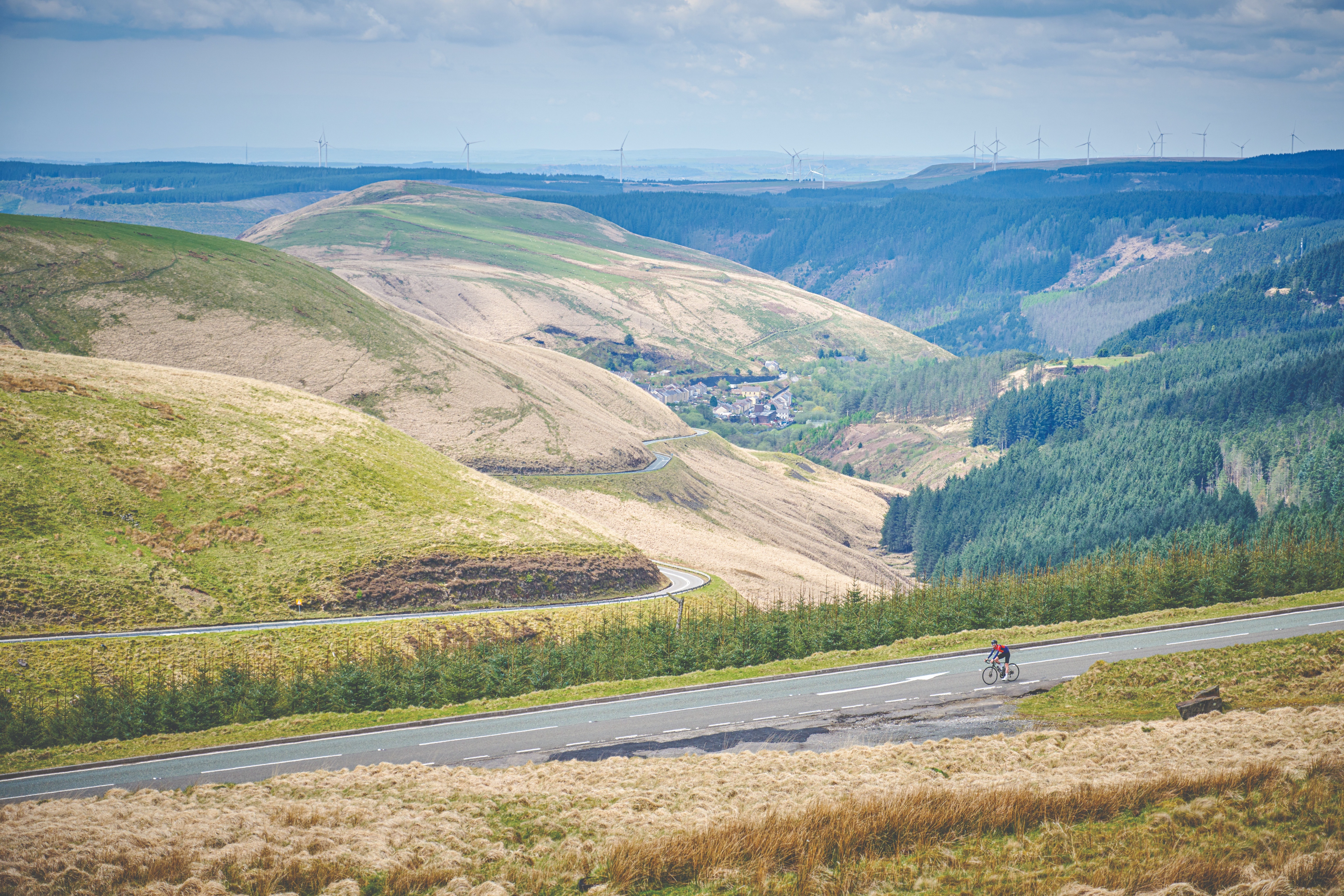
Most cyclists are time-poor. After taking care of the full-time job, the family, the household chores, as well as keeping alive some semblance of a social life, the hours remaining to us to spend in the saddle are few. Each minute on the bike feels precious and not to be wasted. This lack of time can lead us to feel we need to push hard on every ride – the relaxed cafe spin seems far too inefficient compared to the fast and furious intensity session. We assume that more intensity means greater gains, but the truth is more complicated.
For long-term improvements in cycling endurance, high-intensity sessions should form only a small proportion of your training time. The rest of your riding should be easy – but what exactly do we mean by ‘easy’? Many riders equate ‘easy’ with the fabled Zone 2 (55%-75% of FTP), but at its higher end – and depending on your state of fitness – it’s easy to stray above genuinely easy effort level. So it’s time to redefine easy.
In layman’s terms, easy should be regarded as riding within your comfort zone. At this intensity, you are adding to your training volume without inducing fatigue that could impact subsequent sessions. Duration of easy rides varies widely from a 30-minute active recovery spin to a six-hour endurance-building ride. What matters is getting the intensity right
Easy versus Zone 2

Determining precisely what constitutes ‘easy’ is context-specific, depending on the individual cyclist’s training history, age and goals. “Easy training is at or below the first threshold [LT1],” says coach Tom Bell of highnorth.co.uk, “whether that’s measured by lactate or ventilation [breathing rate].” Beyond this threshold, lactate in the blood rises above 2mmol/L, and the body has to start breaking down more glycogen, rather than relying primarily on fat stores. Tipping into this medium intensity causes additional training stress.
While lactate testing is prohibitively expensive, research by Loughborough University suggests you can use your critical power to estimate your LT1. All you need is a power meter and your average power during three- and 12-minute maximal efforts to calculate your critical power. Once you have your critical power, your first lactate threshold or LT1 is 70-75% of that figure. This is a more individualised approach, since lactate thresholds may differ even between two cyclists with the same FTP. “If both were riding at Zone 2 as defined by the [seven-zone] Coggan model, one might be finding it a lot harder than the other,” says Bell. “This would be because one has just stepped over that first threshold.”
Matt Butt, cycling coach at Saddle Up Cycling agrees: “If you’re doing Zone 2 properly, it’s easy compared to VO2 efforts, but not easy by any means.” He points out that there is a lot of confusion around Zone 2 training.
An easier, albeit more rudimentary, method of determining easy intensity is by rate of perceived exertion. This means rating your level of effort from one (very light) to 10 (max). “RPE can be a good way to determine whether you’re really training easy or not,” says Bell. Four out of 10 should be considered the top rung of easy. Five and six is moderate-intensity work, before tipping into higher intensity at seven and above
In terms of intensity, easy riding and active recovery are the same. The difference comes down to duration, with recovery rides tending to be shorter. “Recovery is normally when you’re tired from your hard efforts and you’re hardly pushing the pedals,” says 21-year-old Lifeplus-Wahoo rider Kate Richardson, who spends 10-14 hours a week at an easy intensity. “If I’m going to do a long endurance ride, it will be only a wee bit higher watts.”
Mitochondria boost
Although it might seem counter intuitive, sustained periods of easy intensity can have amazing aerobic benefits. This is because easy riding increases the amount of mitochondria – the powerhouse of cells – in the slow twitch muscle fibres that do most of the work at endurance pace. Mitochondria respond to a cell’s metabolic requests by synthesising energy (ATP) – more of them means more energy, enabling you to ride harder for longer.
The benefits don’t end with mitochondria. “The heart is a big part of this system,” says Bell, explaining that easy training increases cardiac output by improving stroke volume – the amount of blood pumped per beat. “Even if you’re at a submaximal intensity, your heart’s still working quite hard. If you can do that for two, three or four hours, you’re getting great adaptations – which is why even easy training can improve your VO2 max.”
Norwegian sports scientist Stephan Seiler’s ‘Hierarchy of Endurance Training Needs’ suggests that overall volume of training is the most fundamental pillar for any elite athlete. Lower training stress at easy intensity allows riders to increase training duration without tipping into non-functional overreaching or overtraining.
This is why pro riders spend so much of their time on the bike at an easy intensity. “I always do a lot of easy miles from October to December,” says Richardson, “and that’s to allow for when I have to add intensity as I’m approaching a race. Currently, as I’m preparing for races, I’m doing two or three intense sessions a week and everything else is just easy pace, longer miles.”
All these principles apply to amateurs too. A study from Applied Physiology found that a six-week polarised approach to training – 80% Zone 1 (below LT1) and 20% Zone 3 (above LT2) – where subjects averaged 6.5 hours total training time per week yielded greater improvements in aerobic threshold, peak power output and time to exhaustion than did a threshold plan (57% below LT1, 43% between LT1 and LT2).
Train your brain

Aside from the physiological benefits, spending more time in the saddle doing longer, easy rides can work wonders psychologically. “The brain is ultimately the one that decides whether a muscle is going to be conditioned to a certain level,” says Bell. “If you go into an event that lasts four hours but you’ve never ventured more than two in training, your brain might perceive that hour three and four as a threat and shut off motor unit drive to the muscles.”
Then again, the brain can make it difficult to commit to an easier schedule. Despite all of the advantages of doing more easier-paced riding, it isn’t always easy to change your mindset and trust in the process – particularly if you’re prone to comparing yourself to other riders or focusing on average speed. Rather than worrying about hitting a particular power zone or holding an impressive average speed, try to free yourself from the data.
“The whole point of having an easy ride is not to have to look at numbers the whole time,” says coach Butt. “As cyclists, we want to track everything, but you have to start thinking that recovery is training in itself – if we just go hard all the time, we’re not going to get better.” He insists that easy training has mental benefits too. “We can’t be ‘on it’ all the time. Training [too hard] can add to anxiety, whereas you can add in mindfulness and have a chance to decompress with active recovery and low-intensity training.”
Practice makes perfect
Bell recommends using a polarised plan: 80:20 where 80% of your riding is low-intensity and only 20% is high-intensity work. “Th e right distribution varies from individual to individual,” he says, “but make sure you’re not struggling to recover from one session to the next. You can’t do high-quality, high-intensity training day after day without breaking down eventually, so the gaps between sessions can be filled with riding that is easy but still productive.”
The problem with needing to do long, easy rides is of course time constraints. Bell advises squeezing in as much easy riding as you can, and then being strategic with higher-intensity sessions. “You can fit high-intensity training into a short, 40-minute ride and still tick off everything you need to do, while saving time for those longer rides.”
Another suggestion is provided by PDQ Cycling Coaching’s Jen Lemen: use your commute to work for more intense efforts and sprints, while keeping things easy on the way back. “You don’t need to do two hard sessions, so the ride home needs to be super-chilled,” she says.
Off-bike easy

Not all ‘easy’ training needs to be done on the bike. Lemen recommends cross training, with a specific focus on strength and conditioning in the gym. “As we get older, we lose muscle mass, and often women start with less muscle mass in the first place,” she says. “The more muscle you can build earlier on, and then maintain, the better for your long-term fitness. The more robust you are, the more likely you can train consistently – and that’s the key to getting quicker.”
Strength training is a key part of Canyon-SRAM rider Zoe Bäckstedt’s schedule – she does it at least once a week year-round. “It’s normally an hour long, full-body workout – I’ll do quads, hamstrings, glutes and then upper body and core,” says the U23 cyclo-cross world champion, adding: “I also have to do a lot of running, and the better I can be [at running], the better my result in a race.”
For amateur riders not used to it, running can represent too great a training stress to slot in among rides. Walking may be a better alternative. “Being active during the day is far better for your recovery,” says Butt, “and walking can be really beneficial. You’re not going to add any fatigue, but you’re moving your body in different planes.”
Periodised approach
How much easy training you need depends on the individual, and Bell believes it’s good to look at your training history and assess your strengths and limits to work out the quantity required: “If someone has been training at a decent volume for years and their fi rst [lactate] threshold is pushed quite close to their FTP, they’d be best focusing more on other limiters.” On the other hand, less well trained riders may benefi t even more from increasing their volume of easy riding. “For newer cyclists, there’s huge scope to improve their efficiency, bring their fi rst threshold a lot higher than it currently is and work from the ground up – provided they take things really easy,” says Bell.
Does every hard ride need to be followed by an easy day? “Not necessarily,” says Butt. “Some people fi nd they’re OK with two consecutive days of hard riding, while others take longer to recover.” We’re all familiar with the temptation to ride too hard too often – whether it’s staying in the big ring on a short, sharp climb or turning a club ride into an intense paceline. But even if you’re strict about keeping it easy, the waters have been muddied by the focus on Zone 2. Make sure your easy rides are truly easy for you – taking cues from the advice above.
Most of us would benefit from dialling down the intensity while upping our hours in the saddle. If you’re already maxxing out your available training hours, you need to accept that there are no shortcuts to building your aerobic base – slogging through back-to-back all out eff orts on the turbo isn’t going to get you there any quicker. Keep your riding at genuine low-intensity for 80% of the time and you’ll make progress while putting yourself through less pain. Easy!
Easy ride essentials
High North Performance’s Emma Wilkins shares her easy-riding essentials.
- Pay attention to your breathing. You should be able to speak or even sing comfortably, and not in broken sentences. This is a good indication that you’re below your first lactate or ventilatory threshold.
- Dial in on what it feels like to push the pedals at a low wattage or intensity. Think about how much pressure you’re applying to the pedals and learn that feeling. This can help when riding on undulating terrain to keep your effort level under control and avoid power surges when you hit an incline.
- Riding easy can be mentally challenging, as it can be frustrating, and there’s often a temptation to chase other riders or Strava segments. Keep in mind the purpose of your session, and know that you’re riding easy today so that you can ride or race hard another day.
- Shorter easy rides (90 mins) can be planned the day after a harder ride since the fatigue from the harder ride will generally not impact your ability to ride at a low intensity.
- A good way to track progress from your low-intensity rides is to monitor the highest wattage you can hold while breathing through your nose. You should see your wattage increasing as your aerobic fitness improves. If you don’t have a power meter, you can also consider how tired you feel at the end of a longer ride, how quickly you recover, and how much you need to eat during a long ride.







